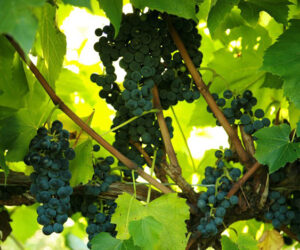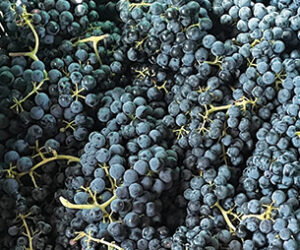Merlot is an underestimated hero of the winemaking world. The varietal character of this French grape includes classic red wine flavors like plum, black cherry, and raspberry. Experts would probably agree that its standout characteristics are body and mouthfeel — rich, plush, and almost velvety in the best versions — a quality that is arguably unmatched by other varieties.
According to Wine Grapes: A Complete Guide to 1,368 Vine Varieties (2012, Jancis Robinson, Julia Harding, José Vouillamoz) the grape is a cross between Cabernet Franc and Magdeleine Noire. However, its parentage wasn’t uncovered until the 1990s and its connection to Magdeleine Noir wasn’t actually confirmed until the late 2000s.
Merlot usually ripens about two weeks earlier than Cabernet Sauvignon, suits cooler conditions, and is higher in sugar and lower in malic acid than its more celebrated rival. On the vine, the bunches are looser and the berries are larger and more thin-skinned than Cab.
The grape also has relatively low tannin so it’s a useful blending partner for more edgy, structured grapes like Cab. However, it is also made into fabulous varietal wines everywhere it is grown.
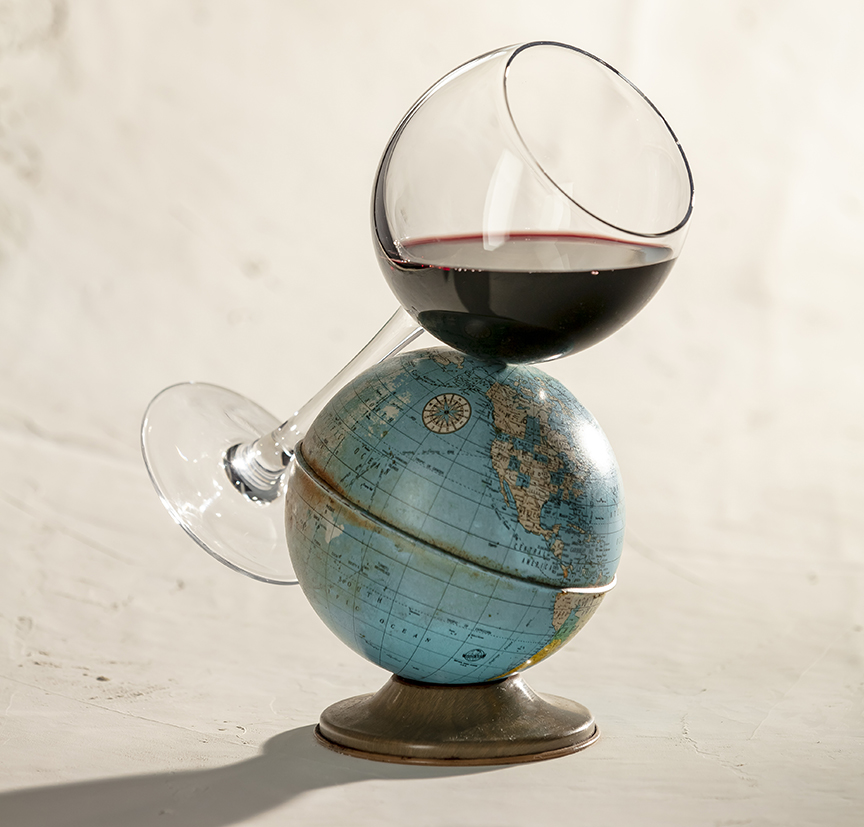
A Grape for the Whole World to Enjoy
Merlot is grown and turned into varietal wine all over the world, from cooler climate regions in France, Italy, and Chile, to warmer climes in California and Australia.
There’s a lot of it around. In 2021, according to the International Organization of Vine and Wine (OIV), Merlot was the second most planted grape in the world with 657,300 acres. Cabernet came in at number one.
There are two main Merlot styles. An international style, made by many New World wineries, is made from grapes harvested later for riper, deeply colored, full-bodied wines. These have darker fruit aromas like plum and blackberry and can be high in alcohol —around 14.5% and beyond. A Bordeaux-style, often practiced across France but also in other cooler regions, favors earlier harvesting to maintain acidity and tends to produce a more medium-bodied wine expressing red fruit flavors like raspberry and strawberry.
However, there’s a lot of crossover between those styles. One of the most famed Merlots is Château Pétrus in Bordeaux. This wine has legendary fruit power; and is famously expensive. “Unbelievably decadent” and “other worldly” are some of the accolades used to describe this Merlot by wine critics.
We hope our three masters of Merlot, located in France, California, and Italy, respectively, can show you, too, how to scale those heights.
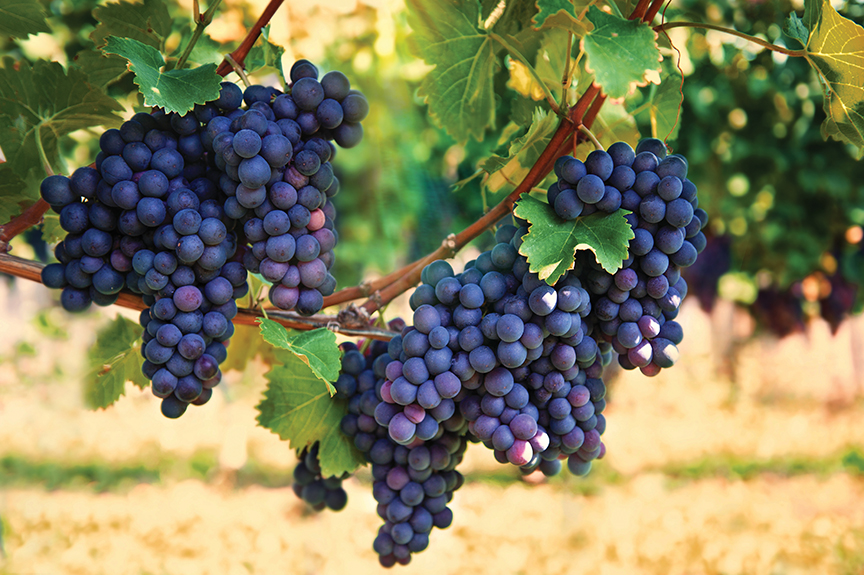
First up though, we should deal with some unfair anti-Merlot bias that could be influencing your appreciation of this grape.
“If anyone orders Merlot, I’m leaving. I am not drinking any (expletive) Merlot,” said a character named Miles Raymond, played by Paul Giamatti.
The 2004 movie Sideways dealt a serious blow to Merlot, especially in the United States. Raymond preferred Pinot Noir. Amazingly, the result, according to some industry reports, was a 30% drop in Merlot wine sales and a strong increase in Pinot consumption.
Our Italian Merlot expert says the Sideways movie presented an unfair Merlot stereotype. “It’s an international grape variety grown in so many places with distinctive versions,” says winemaker Elisa Dilavanzo.
Our United States-based expert, Nick Goldschmidt, says the movie may have actually done Merlot a favor by weeding out some of the lower quality examples.
“It helped, actually, as a lot of the poor Central Valley vineyards I think were pulled as a result,” he says.
However, there are still plenty of generic Merlots out there and, likely as a result, across the U.S. and Europe the wine still seems to suffer from an image problem. Our Merlot expert from France, Simon Blanchard, has a theory as to why.
“I think the production of Merlot has become standardized because many winemakers have used the same clones (which are good, by the way!), but we have forgotten the importance of the genetic diversity of old plots and Merlots over 60–80 years old,” he says.
Among today’s wine drinkers, says Blanchard, Merlot just isn’t trendy. “I think it’s more a question of fashion and that people currently prefer fresher fruit notes, more typical of Pinot Noir,” he says.
However, Blanchard suggests this could make the variety an exciting choice for home winemakers. After all, it’s pretty clear Merlot is an underdog that, more often than many other varieties, fails to live up to its potential. This is your chance to blaze a new Merlot trail and surprise your wine-loving friends!
With that, let’s now get some advice from these winemakers who span the globe and learn how they approach making Merlot wines.
Domaine Simon Blanchard

We’ll start in France, where Merlot is planted in wine regions all over the country. The world’s most acclaimed Merlot-based wines are from Bordeaux. On the Left Bank, the variety is common in generic bottlings from the Medoc, the area that surrounds the famous and expensive classified chateaux. However, it’s on the Right Bank of Bordeaux’s Garonne River where Merlot really stars. The grape is the dominant ingredient in red bottlings from the Pomerol and Saint-Émilion appellations, which are usually the world’s most sought after bottlings.
This is where winegrower Simon Blanchard makes his 100% Merlot wine, the “Au champ de la fenêtre.” His very own estate, Domaine Simon Blanchard, is in an appellation called Montagne, in the heart of the wider Saint-Émilion area.
“This plot selection is made from two parcels on a clay-limestone hillside facing west,” he says. “Merlot on this kind of terroir is always exuberant on the nose with notes of crushed strawberries, blackcurrant, raspberry, but also spice and black olives.”
Blanchard says his organic wine is ample and bold on the palate with a dense tannic structure and long, mineral finish. After a few years in the bottle, it develops black truffle notes that he says is common for locally made Merlots.
He says his bottling is similar in some ways to versions all over the world for its powerful fruit but soft mouthfeel due to gentle tannins that allow it to be drunk very young.
“But this kind of (clay-limestone) soil produces more acidic, more dynamic Merlots that age admirably and very slowly in bottle,” he says.
Blanchard’s winemaking approach is very closely tied to respecting the soil and the grapes. To him — and many experts would agree — great wines need great soils. He talks about loose, aerated soils that allow deep rooting vines and help create “wines with identity.”
Blanchard would insist that you, the home winemaker, find fresh grapes and, where possible, closely monitor where and how they are grown. His approach is best suited to the home winemaker growing Merlot vines in their backyard, or able to source fresh grapes they can monitor in the vineyard.
When deciding harvest time, Blanchard regards Brix and pH levels as important guides but not the deciding factor for phenolic ripeness. In fact, Blanchard generally doesn’t use chemistry at all to decide when to pick.
“I may shock you or sound like a dreamer but I decide on the date of the harvest only by tasting my grapes precisely,” says Blanchard.
Blanchard says he’s tasting the grapes for optimal ripeness of the fresh fruit flavors and phenolic ripeness of the skins. “It is important for me to have soft and extractable tannins without losing the freshness of the fruit,” he says.
The grapes are harvested by hand and arrive at the winery in small crates. If the stems aren’t too green, Blanchard may choose not to destem some of them.
Everything in the winery is done by gravity without pumping or even crushing the grapes. It’s all about respecting the fruit.
“The extraction (of the juice) is gentle and almost exclusively by punchdowns,” he says.
By conventional, commercial standards, where the crusher can be ubiquitous, using the punchdown method — or pigeage to give it the original French name — to extract the juice, may seem unusual.
At many wineries, punchdowns are usually only thought of as a way of breaking up the cap, circulating the grape skins to oxygenate the must and extract color and phenolics. In recent years across the wine industry, however, it’s become common to destem and not crush the grapes, even red ones, especially if you are after fresher fruit flavors. The destemming process does knock the grapes around anyway, helping to free up juice.
Before fermenting, the Frenchman allows his punched down must to macerate for up to a few days. “Fermentations are carried out by indigenous yeasts and I let the temperature rise naturally throughout the fermentation to 86 °F (30 °C),” he says.
Interestingly, all three of our Merlot masters use indigenous yeasts rather than inoculated, freeze dried, commercial yeasts.
However, most professional winemakers, especially in the United States, still use inoculated yeasts. Natural fermentations can be a risky business. According to wine teachers worldwide they can fail to finish, or even begin. Also, home winemakers may not have the best environment for a natural fermentation — the dominant natural yeasts in a winery are likely better suited to fermenting grapes than the ones in your home.
But if you’re feeling it, why not include a natural ferment in your Merlot journey? (Although, having a commercial strain on hand in case a natural fermentation does not take off is still recommended.) Our winemakers share some good advice that will help give your natural fermentation the best chance.
You could also opt for a cultured yeast. In a previous WineMaker article, “Mastering Merlot,” winemaker John Rauner, who makes Merlot at his Yakima Valley winery, recommends either Pasteur Red for a more complex Merlot or EC1118 for a cleaner, fresher finish. Yeast manufacturers have numerous other strains they recommend for Merlot available on their websites, depending on the character you’re looking to accentuate.
Blanchard says his natural fermentation usually lasts 15–18 days. “I then carry out a hot maceration for about ten days,” he says. “Malolactic fermentation takes place after the run-off in 400-L (106-gallon) barrels. I don’t add bacteria either, it happens naturally,” he says.
The must is tasted on a daily basis and Blanchard presses when he achieves “a good compromise” between the wine’s power, tannin, and redox potential.
Redox potential is complicated but concerns a wine’s ability to both oxidize (absorb oxygen) and also undergo reduction (lose oxygen), without negative impacts to its flavor.
Blanchard separates juice that has already run off and uses a vertical press with plastic cages to perform a gentle press with gradual increases in pressure, separating the press runs according to taste. All of his Merlots age in French or Austrian oak barrels.
“For me, oak aging helps bring a softness to the tannic structure and opens the wine,” he says. “I don’t want oaky flavors so that’s why I use French or Austrian oak barrels with light toasts and fine grain.”
When it’s time to bottle, Blanchard uses a “soft porosity system” to filter at between 2–3 microns. He says this porosity helps create wines with an elegant finish.
“I use sulfite in vatting, after malolactic fermentation, during aging if necessary, and just before bottling,” he says. Blanchard aims for a final, total SO2 level of about 60 to 70 mg/L.
He thinks both heat and cold stabilizations impact the taste. Rather than do them, he says he explains the decision and potential impact on appearance to customers.
For the home winemaker about to tackle Merlot, Blanchard says respecting this grape’s balance will help make “everything” possible. He warns against the temptation to press the grapes too hard and add lots of oak.
“This kind of Merlot is boring and nobody drinks these now,” he says with direct French charm.
Californian Merlot

Winemaker Nick Goldschmidt is originally from New Zealand and makes wine all over the world. His lively YouTube videos show a passion for Merlot. Apart from producing three versions under his own Goldschmidt Vineyards label in Healdsburg, Sonoma County, he also makes a Merlot in Canada and consults at 15 wineries in Chile that also bottle it.
Two of the Goldschmidt Vineyards bottlings are varietal Merlots made in Sonoma County — one of those is made from grapes in the Alexander Valley, the other from Dry Creek. A third, a Merlot blend, sources fruit from Napa Valley.
These Sonoma Merlot bottlings, he says, show more red fruit flavors, good acidity, and with alcohol levels usually at 14.5%. The hotter climate in Napa produces a Merlot blend that’s higher in alcohol with more expressive black fruit flavors.
Goldschmidt says Pomerol, the tiny but renowned French region, is his inspiration for making Merlots.
“Always Pomerol!” he says. “Pomerol is fleshy, full and rich but at the same time lighter and appealing. Love them!”
In Napa and Sonoma, he says winemakers like him tend to look for a more Cabernet-style Merlot but without the unpleasant green flavors that can sometimes impact Cab wines.
Goldschmidt, like Blanchard, is very focused on the viticulture side of his Merlot winegrowing. He says his vineyard management is “very fussy” and in the winery he wants low extraction from the grapes to get the best flavors. He also harvests based on the taste and look of the grapes rather than chemistry. “When I taste the berries, I’m really looking at the color and the tannin,” says Goldschmidt. “I’ve really changed my approach to that in the last, probably 15 years of winemaking.”
He says in his early days he used to regard Merlot like Cabernet. “Now I realize it has a completely different ripening factor and different extraction,” says Goldschmidt.
He destems the grapes straight into a stainless steel tank set to 61 °F (16 °C) where, rather than inoculate with yeast, he also lets the native yeast take over.
Goldschmidt has some very useful advice for the home winemaker interested in trying a natural fermentation: “If you are a home winemaker you need to add 15 ppm SO2 if you want to go native,” he says. “In a home winemaking situation, you will have a lot of bad yeast around but in a winery we have a ton of yeast and so usually we are OK (not adding the SO2).”
For his Napa Merlot blend, he’s not concerned if the native yeasts are eventually overpowered by the rising alcohol level as he doesn’t mind some residual sugar. “In the Alexander Valley, we typically are a little bit lower in alcohol and so the yeast is still fairly efficient at that level and therefore we can have drier wines, usually two grams or under in terms of sugar,” says Goldschmidt.
Goldschmidt’s fermentation is a wild and exciting ride, which he describes as “aggressive.”
“So, regarding Merlot and fermentation, it’s very complicated,” he explains. “What I’m looking for is color stability.”
Before fermentation, the red juice can have a purple hue. Goldschmidt is very focused on ensuring his fermenting must’s color only moves from purple to red and never gets any brown or orange hues. To do that, Goldschmidt pushes the fermentation temperature up and down using a mixture of temperature control from his steel tanks and cap management.
“I dial the temperature up and down, raising and lowering the cap, depending on how much extraction I want to get, how full I want the mouth to be,” he says.
This results in maximum temperatures of 86 °F (30 °C) and as low as 72 °F (22 °C).
“The other thing I do, especially in Canada and I have tried it in California and probably will continue to do so, is co-fermenting with Viognier or Sémillon,” he said “Normally it’s about 3% Viognier or Sémillon grapes that goes into the Merlot when we harvest it.” Some winemakers would say that adds freshness and also broadens the palate feel.
Compared to many winemakers, he likes a long period on the skins during and after this fermentation stage. Maceration usually lasts about 30 days but can extend to 50.
“During that time, I will taste three times a week and I always compare a sample against the previous Monday so that I can see how the wine is maturing,” says Goldschmidt.
The result is wine that’s very full, he says, with a Cab-like richness, “but still the same silky tannins and no greenness that you would typically get from Cabernet.”
The wine is racked to tanks three times following malolactic fermentation. “I leave the wine on skins for 30 days so malolactic generally starts by itself anyway and usually finishes soon after we press off,” he says. “I wait for the malolactic to finish before I start doing my tank racks . . . The reason for the tank racks is of course because I want to get very low turbidity so no Brett and
no bacteria.”
If the wine is in barrel, they rack three times during the first year. “If we stay in concrete then usually three times there too as the wine can be pretty reductive if not moved,” he says.
Decisions around filtering reveal something of Goldschmidt’s winemaking philosophy: A combination of frenetic action during the early stages of the process, followed by patience based on experience.
“There’s no need to filter as we can rack at under 10 NTU,” he says, referring to nephelometric turbidity units, i.e. the unit used to measure the turbidity of a fluid or the presence of suspended particles. “Everything affects wine initially but after six months it is often hard to tell.”
So Goldschmidt is not concerned by the high levels of solids in the wine in those early months, which some winemakers might reduce with a bentonite addition. Instead, Goldschmidt waits. He also doesn’t do a heat or cold stabilization because, he says, the winter takes care of both.
He adds as little sulfite as deemed necessary. “I want to be stable with a total of 60 ppm rather than most wineries being over 100,” says Goldschmidt. His free SO2 is usually about 22 ppm.
Goldschmidt prefers aging in French oak barrels that are a year or two old, suggesting he’s wary of overpowering his wine with too much oak flavor.
His advice to a winemaker beginning their Merlot journey focuses back on the vineyard.
“It’s all in the vineyard,” he says. “VSP (vertical shoot positioning) is very important. There is a verb in VSP.” VSP is a popular technique where the vines shoots are directed upwards to encourage growth. He says clay soils and water holding capacity are also key.
For home winemakers using fresh grapes and able to monitor their source, he recommends keeping an eye on berry size. He says for Merlot this can have “a far bigger impact” on the resulting wine quality than that for Cabernet.
“Berry size has to be maintained,” he says. “Cab is normally 0.95 g and Merlot can be 1.2 g.”
Merlot from Italy’s Euganean Hills
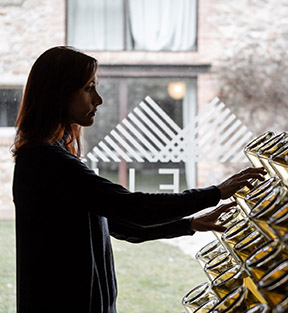
In Italy’s Veneto region, Elisa Dilavanzo makes her Merlot-based wines in the Euganean Hills just south of the town of Padua. Her certified organic winery, called Maeli, is in the small town of Vò. If the town sounds familiar, three years ago Vò made international news as one of the first places in Europe to go into lockdown following a COVID-19 outbreak.
It was a tough time for Dilavanzo’s winery but she says the long pause was used to improve the wines and market them more widely.
Her two Merlot-based bottlings are characterful and powerful with lively acidity she says, but not aggressive. She attributes their persistent and lingering aromas to the volcanic soils of the area.
“Here the particular climate gives maturity to the fruit without exaggerating its concentrations,” she says. “The aromas include herbs and Mediterranean scrub.”
For both wines, Merlot is about 50% of what she describes as a Bordeaux-style blend. “It supports acidity and freshness providing cherry, blackberry, and strawberry flavors,” she says.
The more high end of the two, called Colli Euganei Riserva, is 50% Merlot, 45% Cabernet Sauvignon, and 5% Carménère. Dilavanzo says Carménère completes the blend with spicy aromas and Cabernet contributes herbaceous notes.
The variety of microclimates and vegetation across the Euganean Hills and the proximity of cooling sea breezes from the Adriatic, she says, help give “incredible peculiarities to the wine.” The peculiarities include aromas like blood, animal scents, and a vibrant spiciness that is present even without the use of wood.
While the Merlot-based wines from her region can vary considerably, she says, “what they have in common is often subtle mineral taste.”
“In the Euganean Hills the climate is cooler and the use of wood is often combined with materials such as cement, clay amphora, and steel so the spicy and toasty notes are nuanced and stand out more compared to the opulence of Napa Valley Merlots,” she says.
Dilavanzo practices organic viticulture and closely monitors the chemistry of her grapes. She says she aims for 14% alcohol, 6 g of fixed acidity, Brix of about 24, and pH between 3.4–3.6.
“But it is the tasting of the grape which defines the harvest day: The skin color must paint the fingers and the seeds should be dark brown,” she says.
The grapes are harvested by hand and go straight to a cold soak after what she describes as a gentle destem. A peristaltic pump is used to gently transfer the destemmed grapes to steel tanks.
If the grape quality is very high Dilavanzo often keeps 10–15% of the bunches with stems intact. “The goal is to keep aromas intact to ensure a balanced and fresh wine,” she explains, adding that she believes a cold soak extracts “the noblest aromas of the grapes.”
At this stage Dilavanzo never uses sulfites. “I work the grapes at relatively cool temperatures — between 59–68 °F (15–20 °C) — and use dry ice to safeguard aromatic flavors,” she says.
Like Blanchard and Goldschmidt, the fermentation is a natural one. She says her natural fermentation is also spontaneous rather than ‘pied de cuve’ (PdC). The French term refers to the preparation of an indigenous winery-made fermentation starter from grapes.
The fermentation temperature of the must is kept cool: Between 59–64 °F (15–18 °C), using a combination of cellar temperature, cooling jackets, and, with smaller volumes, frozen bottles lowered into the tanks.
“We have a long maceration to extract tannins with a carbonic maceration to extract aromas,” she says.
Dilavanzo says the “tumultuous fermentation” lasts 2–3 weeks and the malolactic fermentation takes place without inoculation during that time.
“I usually taste the liquid and decide to press as soon as there are no bitter notes,” she says.
The pneumatic press is a gentle one. “I put the first press up to 0.5 bar in one tank, the second press at between 0.5 and 1.2 bar in another tank, and the liquid pressed over 1.2 bar in a third tank.”
A tasting of the different press juices determines if these tanks are aged separately or together. Then the different tanks of Merlot and their blending partners are separately vinified in either steel, cement, or two- to three-year-old oak barrels.
“I like Merlot to age in steel and medium-small concrete tanks,” she says. “Here the slow micro-oxygenation — much less than in wood — and the high inertia allows an optimal evolution of the Merlot.”
However, she does also age Merlot in French oak, from either the Sylvain, Boutes, or Quintessence cooperages. She only uses older barrels in order to preserve the natural flavors of the grapes.
Dilavanzo doesn’t filter or clarify her reds. “I’m not a fan of filtering; usually it undresses the wine,” she says, referring to the way some winemakers believe filtering can take out solubles that affect color, aromas, and tannins.
Sulfites are used at low levels. “I usually add sulfites following the harvest at 2 g/hL (20 ppm) to avoid possible spoilage from acetic acid,” says Dilavanzo. A small sulfite addition is also made at bottling. “The finished wine contains a maximum 60 ppm total SO2,” she says.
A cold stabilization is allowed to happen naturally. “We usually bottle the wines after three winters to increase their complexity so stabilization happens naturally during that period,” she says.
Her advice to the home winemaker is to “indulge” the wine and let the timing of the winemaking be led by the wine itself rather than “one’s own need” or “stylistic choices.”
She also recommends getting out and traveling to the vineyards that grow Merlot and meeting the winemakers. “That will broaden your horizon and give you inspiration.”
Now it’s up to you!
Merlot is widely grown so it shouldn’t be hard to track down some good sources (of both grapes and vines if you are adventurous enough to grow your own). If you’re in the United States, trade associations like the California Wine Grape Growers or the Washington State Wine Grape Growers can help you find leads for locating the best Merlot grapes.


